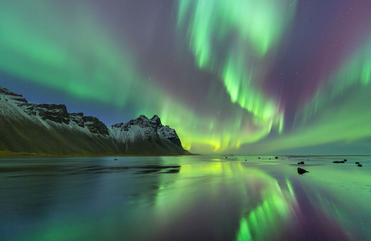An Active Sun Could Lead To More Northern Lights…
:max_bytes(150000):strip_icc()/TAL-northern-lights-SOLARMAX0124-a4a1d62e9991474183434a3d2a670217.jpg)
If you’re a fan of the Northern Lights (Aurora Borealis), there’s exciting news on the horizon—quite literally! Increased solar activity, driven by our Sun’s energetic outbursts, may light up the skies with more frequent and vibrant auroras over the next several months. But what’s behind this dazzling phenomenon, and how can you witness it?
The Northern Lights are one of nature’s most stunning light shows, created when charged particles from the Sun collide with Earth’s magnetic field and atmosphere. When the Sun is particularly active—releasing more solar flares and coronal mass ejections (CMEs)—it sends a powerful stream of solar particles toward Earth. This solar wind interacts with Earth’s magnetic field, producing those breathtaking waves of green, pink, and violet that we call the Northern Lights.
Right now, the Sun is in a more active phase of its 11-year solar cycle, which means it’s producing more solar storms. These storms, when they hit Earth, can lead to more intense and widespread auroras, visible much farther south than usual. So, even if you don’t live near the Arctic Circle, you might still have a chance to see them!
With solar activity ramping up, you might be wondering where you can catch this celestial display. Typically, the Northern Lights are most visible in higher latitudes—places like Alaska, Canada, Norway, and Iceland—but during periods of strong solar activity, they can be seen much farther south.
If you live in the northern U.S. or Europe, keep an eye on space weather forecasts. There are even apps that can alert you when auroral activity is high in your area. Clear, dark skies away from city lights are your best bet for a great view. Look to the northern horizon and, with a little patience, you might witness the magic.
This uptick in solar activity is expected to continue, as the Sun approaches the peak of its cycle. Experts predict that 2024 and 2025 could be prime years for aurora hunting, with some solar storms producing Northern Lights visible as far south as the central U.S. or Europe.
While this is great news for sky-watchers, there’s a flip side. Increased solar activity can also interfere with satellites, communications systems, and even power grids. But for now, the spectacle of a more active Sun means we can look forward to some truly memorable nights under the stars.
Whether you’re a seasoned aurora chaser or someone who’s never seen them before, the coming years could offer plenty of opportunities to witness the Northern Lights in all their glory. With the Sun’s activity on the rise, now is the time to keep your eyes on the skies—and your camera ready!
Have you ever seen the Northern Lights? Share your experiences or your best tips for spotting them in the comments below!
